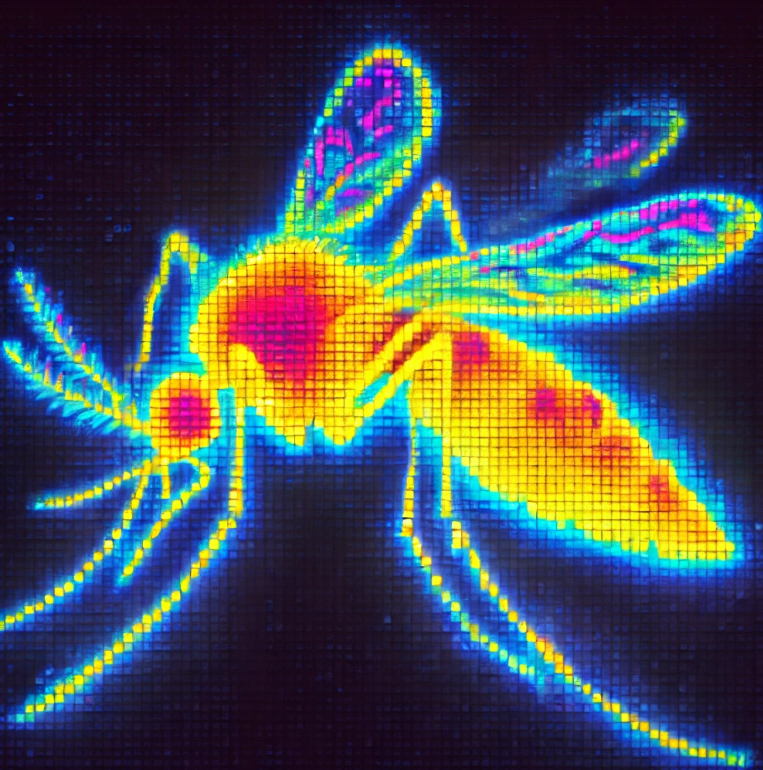
The Secrets of Mosquitoes’ Heat Vision: A New Approach to Fighting Deadly Diseases
Imagine you’re walking through a warm summer evening, enjoying the fresh air when suddenly you feel the unmistakable itch of a mosquito bite. For most of us, this is an irritating but harmless experience. But for millions of people around the world, that bite can carry life-threatening diseases like dengue, yellow fever, or Zika. What makes these tiny insects such efficient carriers of disease? A groundbreaking study has just shed new light on this question, and the findings could pave the way for innovative solutions to protect vulnerable populations.
The Invisible Trap: How Mosquitoes Find Us
For years, scientists have known that mosquitoes, particularly the species Aedes aegypti, are attracted to humans by a combination of sensory cues. They are drawn to the carbon dioxide (CO2) we exhale, the organic odors our skin emits, and even visual cues like movement. But these cues alone don’t explain how mosquitoes can zero in on us so effectively, especially in the dark. A new study has revealed a surprising answer: mosquitoes can detect infrared (IR) radiation, the heat that radiates from our bodies, and use it to find us with pinpoint accuracy.
This discovery is more than just an interesting piece of trivia—it’s a game-changer in our understanding of mosquito behavior. By understanding how these insects locate their hosts, we can develop better ways to prevent mosquito bites and the spread of the diseases they carry.
The Science Behind Mosquito Heat Vision
The researchers behind this study set out to explore how Aedes aegypti mosquitoes use IR radiation in combination with other sensory cues to find their targets. They discovered that the mosquitoes have specialized neurons at the tips of their antennae that are sensitive to temperature changes. These neurons are equipped with a heat-activated channel called TRPA1, which is also found in some other animals known for their ability to detect infrared radiation, like rattlesnakes.
When a mosquito detects the warmth of a human body, the TRPA1 channel gets activated, allowing the mosquito to sense IR radiation. Interestingly, the study found that the effectiveness of this heat detection is amplified by the presence of two other proteins, called opsins, which are typically associated with vision. These opsins help the mosquitoes detect even lower levels of IR radiation, making their heat-seeking abilities even more precise.
Real-World Implications: From Understanding to Action
This discovery has far-reaching implications, especially for public health in regions where mosquito-borne diseases are rampant. By understanding how mosquitoes detect their hosts, scientists can develop new strategies to disrupt this process. Imagine a world where we could create invisible barriers that block the mosquitoes’ ability to sense heat, making it much harder for them to find and bite humans. This could be particularly valuable in areas where traditional methods like insecticide-treated bed nets or sprays are less effective due to resistance or environmental concerns.
Moreover, this research opens the door to designing more effective mosquito traps. Current traps often rely on CO2 or chemical attractants to lure mosquitoes, but incorporating IR radiation could significantly enhance their effectiveness. These new traps could be deployed in high-risk areas, reducing the number of mosquito bites and, consequently, the spread of deadly diseases.
A New Perspective on an Old Enemy
This study not only advances our scientific understanding but also highlights the importance of multidisciplinary approaches in solving complex problems. The research team combined expertise in neurobiology, biophysics, and entomology to unravel how mosquitoes integrate various sensory inputs. This holistic approach could serve as a model for tackling other public health challenges, where understanding the intricate behaviors of disease vectors is key to developing effective interventions.
But this is just the beginning. There’s still much we don’t know about how mosquitoes process the information they gather from their environment. For instance, how do they prioritize different sensory cues? What role does their brain play in integrating these signals to make decisions about when and where to bite? Future research could answer these questions and further refine our strategies for mosquito control.
Join the Conversation
What do you think about this new discovery? Could it lead to the next big breakthrough in preventing mosquito-borne diseases? How might this research impact the way we think about and approach other insect-borne diseases? Share your thoughts and ideas in the comments below!
Unlock Science Secrets:
Discover revolutionary research and innovative discoveries with ‘This Week in Science’! Designed for educators and science lovers, our free weekly newsletter offers insights that can transform your approach to science. Sign up now and deepen your understanding and passion for science. If you liked this blog, please share it! Your referrals help This Week in Science reach new readers.



